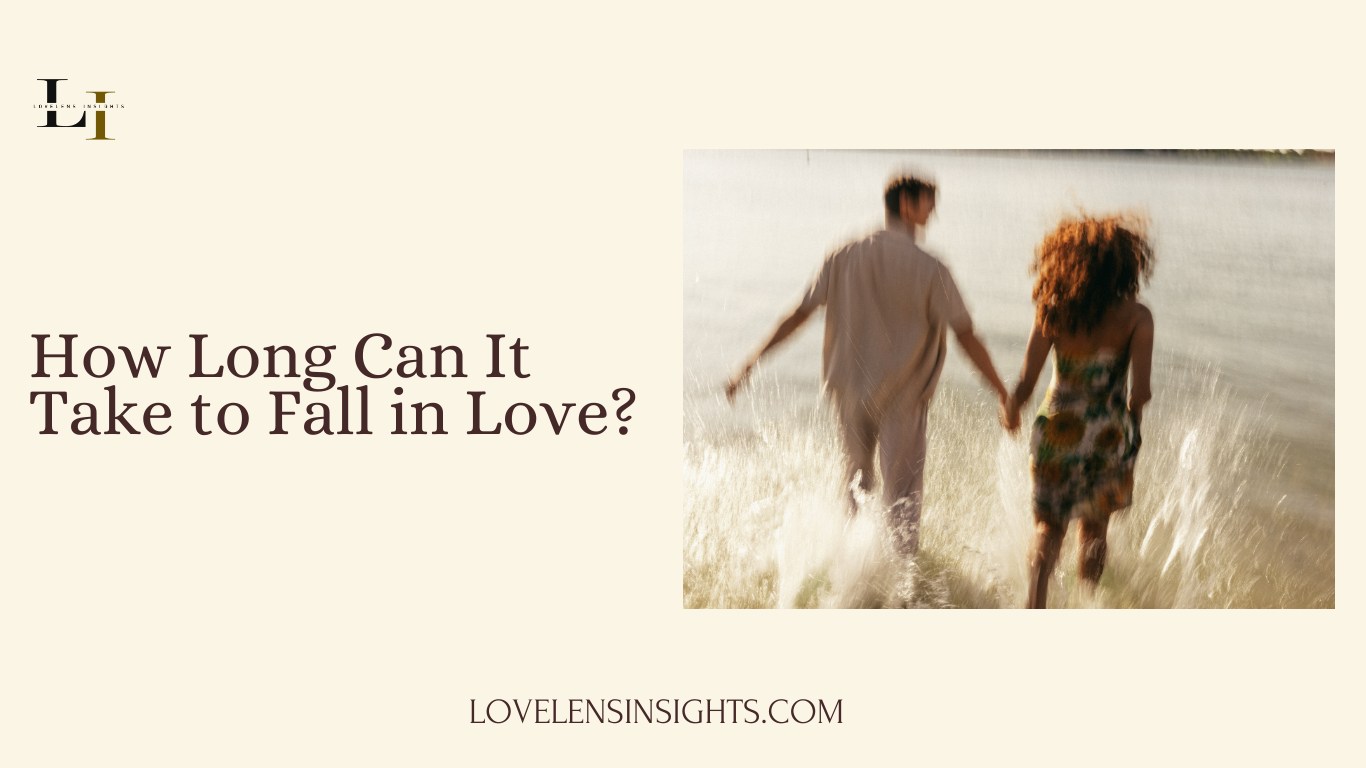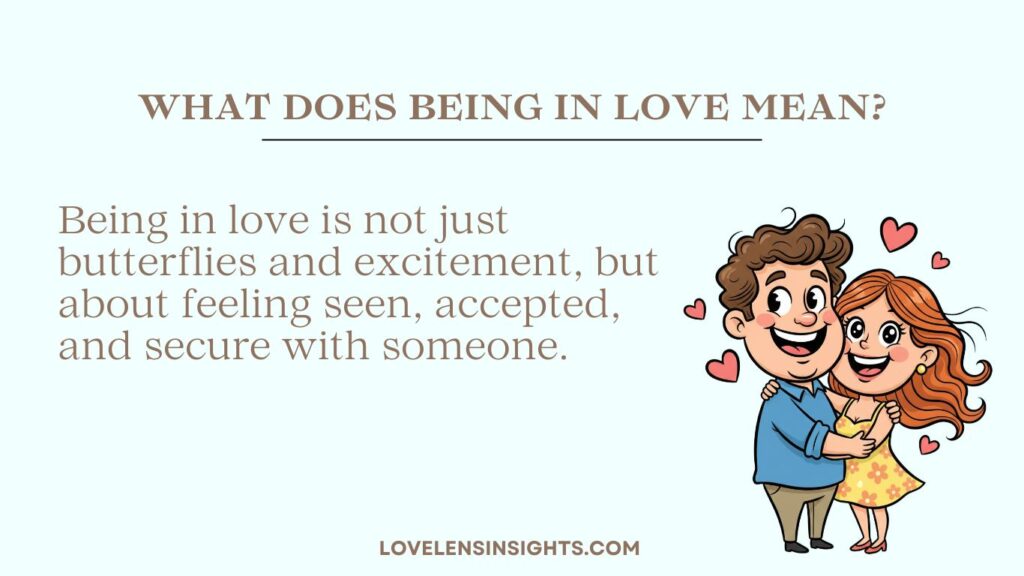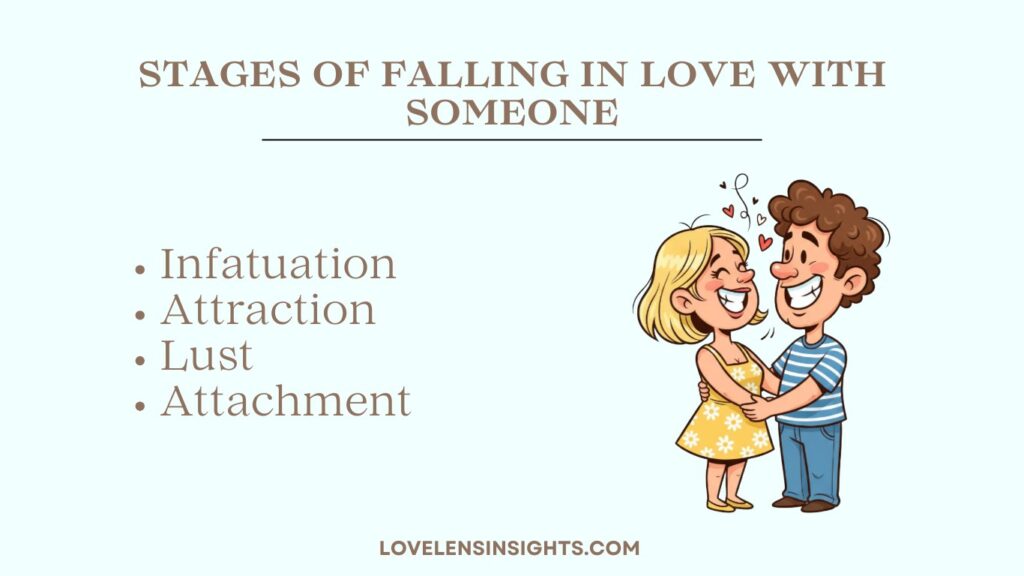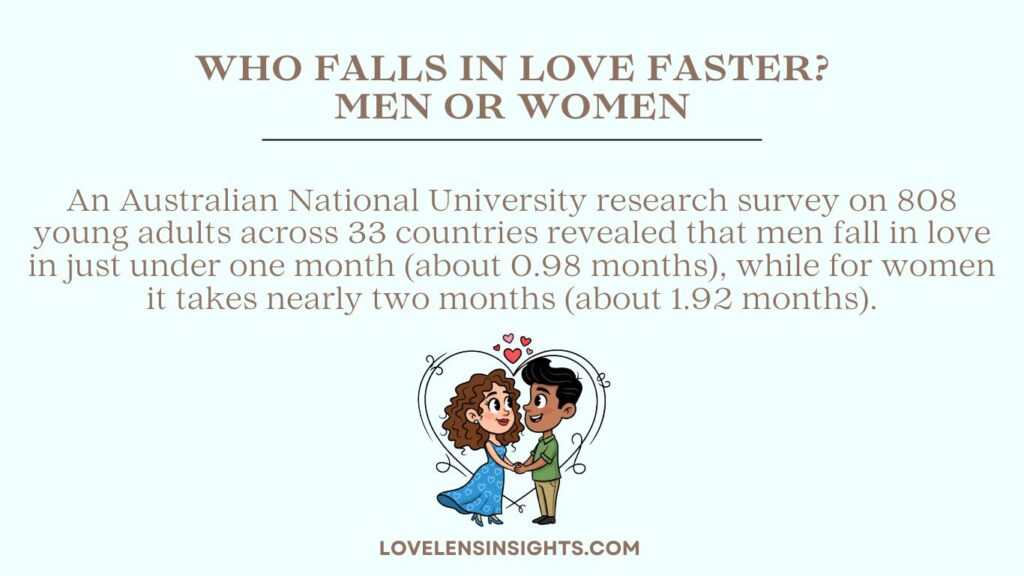
Falling in love is one of those experiences that feels both universal and deeply personal. Some people swear they knew instantly, while others say it took months before their feelings felt real.
As a result, many wonder whether there is a “normal” timeline for love. Or does it always depend on the people involved?
Falling in love isn’t just about butterflies in your stomach or late-night texts. It’s also about how two people build trust, share experiences, and grow close over time. It’s a unique experience for everyone.
The time it takes can vary greatly. Some people fall fast, while others take their time. In this article, we will explore how long it can take to fall in love, and why emotional intimacy in relationships often plays a key role in deepening those feelings. Let’s get started.
Being in love is not just about butterflies and excitement, but about feeling seen, accepted, and secure with someone. Love can be understood in two forms: passionate love, characterized by intense attraction and desire, and companionate love, a deeper bond rooted in trust and commitment.
These two forms can evoke different feelings, making the experience of being ‘in love’ unique to each moment. Moreover, being in love often involves a selfless concern for your partner’s well-being, where their happiness, safety, and growth become just as important as your own.
This profound emotional investment is what sets falling in love apart from casual attraction, marking a significant shift in your feelings and priorities.
For many couples, the true essence of love lies in cultivating intimacy in relationships, where emotional closeness and safety foster deeper feelings that go beyond mere time spent together.
Love usually unfolds gradually, progressing through various stages that transform how you perceive and bond with someone.
This journey involves building a connection that extends beyond physical attraction and evolves into a deeper understanding and appreciation of one another.
As a result, falling in love involves not just initial chemistry, but also the growth and development of your relationship over time, shaped by shared experiences, trust, and mutual support.
The first stage is often infatuation, where everything feels exciting and intense. You may find yourself constantly thinking about the person, replaying conversations in your head, and feeling energized by their presence. However, this stage is more about attraction and curiosity than deep emotional bonding.
This stage involves noticing not only how someone makes you feel but also how they fit into your life. For example, you might admire their values, feel drawn to their personality, or enjoy the way they support your goals. Due to this, attraction becomes less about thrill and more about genuine connection.
Lust often overlaps with the first two stages, driven by physical chemistry and desire. It’s fueled by hormones and the natural urge to bond physically. In addition to creating closeness, it can also intensify feelings of attachment in the early phases of a relationship.
However, lust alone doesn’t sustain love; it needs to be supported by trust and emotional safety.
Finally comes attachment, the stage where love feels steady and secure. At this point, partners begin to prioritize each other consistently, make plans for the future, and feel a sense of “home” in one another.
Furthermore, attachment is often what separates short-lived sparks from long-lasting relationships, because it signals that love has matured into commitment.
If you’ve asked yourself, “Will I ever find love?”, you’re not alone. Love is often described as a mystery, yet science shows it is also deeply connected to biology and psychology. In other words, what feels like butterflies and sparks is actually your brain responding to powerful chemical and emotional cues.
Due to this, researchers have tried to understand how long it really takes for people to fall in love.
Several studies suggest that the timing differs between men and women. On average, men are likely to confess love within three months of dating, while women typically take about four to five months.
However, this is not a universal rule. For instance, some individuals recognize love within weeks due to intense shared experiences, while others need months or even years before they feel ready.
As a result, the timeline for falling in love is less about the calendar and more about emotional readiness. Furthermore, it depends on the depth of trust and openness that partners share.
When vulnerability is avoided in a relationship, it can delay or even block love from developing.
Here are some key hormones that contribute to making you or someone to fall in love:
Falling in love does not have one fixed timeline. For some people, it happens quickly, while for others it grows slowly over time. Both ways can be real and meaningful
Some describe falling in love within weeks because the attraction feels strong right away. However, quick love is often shaped by excitement and chemistry, which can fade if it is not supported by trust and shared values.
On the other hand, passionate love develops as two people spend more time together, open up about their feelings, and build a steady bond. As a result, fast love can feel thrilling, but slow love often brings stability and deeper understanding.
In contrast, when there is a lack of intimacy in a relationship, even months of being together may not lead to true love, because emotional closeness is missing.
The truth is, love does not follow a clock. What matters most is how safe, valued, and connected you feel with your partner. Therefore, instead of comparing your story to others, focus on whether the relationship brings comfort, respect, and genuine care.
Research shows that men tend to fall in love faster than women. One international study by the Australian National University surveyed 808 young adults across 33 countries.
It found that men fall in love in just under one month (about 0.98 months), while for women it takes nearly two months (about 1.92 months).
Moreover, men also fall in love more often, on average 2.6 times in their lives, compared to 2.3 times for women. Moreover, when women do fall in love, they often experience it more intensely.
The same research has it that women show higher levels of romantic intensity, stronger commitment, and more obsessive thinking about their partner.
This difference in pace and intensity may tie back to genetic and psychological factors. Men might be quicker to fall in love as a way to demonstrate early commitment, while women tend to be more selective and emotionally engaged once they’re ready.
Falling in love can feel exciting and a little scary at the same time. It’s not always easy to know if what you’re feeling is real love or just a passing crush. However, there are a few clear signs you’re falling in love with someone.
When you’re in love, even ordinary moments feel brighter. You may notice that you smile more or feel lighter when they’re near. This happiness doesn’t come from what they do for you; it’s simply their presence that makes your day better.
When you’re in love, being with your partner feels like coming home. As visual storyteller Adebayo Kehinde Samuel aptly puts it, “Human or Spaces, home is home.”
This means home isn’t about a building, but the person we love and cherish, someone we value and find peace with most of the time.
You crave their presence, whether it’s a warm hug or a sweet text. Being together is comforting, and even small moments feel special. It’s like your heart finds its happy place when they’re near.
Love often fills your mind in unexpected ways. You might catch yourself daydreaming about their laugh, replaying conversations, or imagining future plans together.
These thoughts can pop up when you least expect them, and they usually bring a soft smile.
Another sign is when you naturally start including them in your future. It could be as simple as thinking about going on trips, introducing them to your friends, or even wondering what life would look like years down the line.
These thoughts grow stronger when there’s a real connection.
Love makes you feel safe both emotionally and physically. You know you can share your secrets, your fears, and even your silly thoughts without judgment.
This kind of comfort is a strong clue that what you feel is more than infatuation.
In short, love often shows itself in small but powerful ways. These signs not only warm your heart but also prepare the ground for deeper closeness.
It’s good to notice when someone else is falling for you. The signs aren’t always grand gestures, although they show up in small but meaningful ways.
If they recall little things you’ve said, more like your favorite snack, a story about your childhood, or even the way you like to eat or your best moves, it shows they’re listening closely. Love often pays attention to the small stuff.
You’ll notice that they bring you up in conversations with friends or family. Sometimes, they may even share stories about you proudly, almost as if you’re part of their daily life.
When someone starts opening their world to you, it’s a strong sign of love. Meeting their close friends or being invited to social events means they want you to blend into the spaces that matter most to them.
If they check in often or show excitement when you reach out, it’s a clue that you’re always on their mind. Whether it’s a good morning text or a late-night call, these moments reflect their growing attachment.
Love often shows in actions. If they make time for you despite a busy schedule or put effort into making you feel valued, it means your place in their life is becoming important. Noticing these behaviors can bring reassurance that love isn’t one-sided. It also builds confidence in where your relationship might be headed.
Falling in love is exciting, but it can feel scary if you’re not sure the other person feels the same way. While unrequited love is real, this doesn’t mean something is wrong with you or that your feelings aren’t valid. Love doesn’t always grow at the same speed for everyone, and that’s okay.
Sometimes one partner may need more time to feel secure, while the other opens up quickly. Instead of seeing it as rejection, try to view it as different timelines. Remember, love isn’t a race. It’s about building trust, sharing experiences, and allowing space for feelings to grow naturally.
If you find yourself in this situation, here are a few gentle steps to take so as to make things right if possible:
And if the love isn’t returned in the way you hope, it doesn’t mean you’ve failed. It simply means your story is still unfolding. The right connection will match your energy and effort.
Here, we believe every stage of love, whether it’s blooming, waiting, or letting go, can teach you something valuable about yourself and your relationships. You’re not alone in this, and your journey toward meaningful intimacy is always worth it.
Falling in love isn’t an abstract concept. It’s real, and its timeline varies. While some people fall in love quickly, others take time. That said, here are some key takeaways from our piece:


